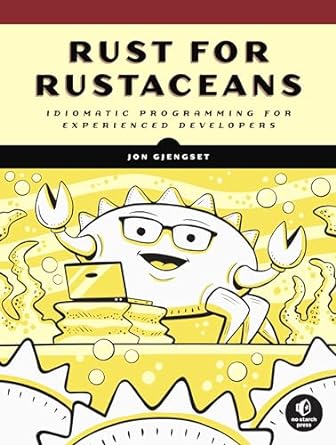|  | Hello,
This issue is packed with cool stuff to fuel your full-stack adventures. We’re diving into BlueSky’s AT Protocol for those curious about distributed systems, and exploring the Clipboard API to help you build smarter web experiences. Check out Rsbuild 1.0 for a faster build tool, and see how FastHTML, Next.js, and SvelteKit stack up in real-world use.
We also have tips on scaling support, setting up a production-ready VPS, and optimizing your website’s fonts. Plus, learn how to add interactive maps to your travel posts with SVGs.
Keep experimenting and learning—there’s always something new to discover! Enjoy the read!
— Your editor, Luciano
PS: Oops, I goofed up the links for the sponsored post in the last issue (💩 happens, right?). I’m including it again here, with the correct link this time. If you’re into building products and want to stay sharp with a product-focused mindset, it’s definitely worth a look! | This issue is kindly sponsored by: | “The great myth of our times is that technology is communication“ — Libby Larsen , Composer | 
| How Does BlueSky Work? — Have you heard of Bluesky, a relatively new social network? I'm not here to convince you to join (although I have an account if you want to connect), but I wanted to share something interesting. The team behind Bluesky developed an innovative distributed protocol called the AT Protocol. In this article, we'll take a closer look at the AT Proto from the perspective of distributed backend engineering. If you're passionate about distributed systems or just curious to learn more, this is worth reading! Read article | The web's clipboard, and how it stores data of different types — Have you ever copied something from your browser and noticed that when you paste it into Word, it keeps all the formatting, but when you paste it into VSCode, it’s just plain text? This difference comes from how the Clipboard API handles various data types. In this article, you'll discover how the Clipboard API works behind the scenes, why these differences exist, and how to take advantage of it for building smarter, more interactive web experiences. Whether you're coding or just curious, this guide has you covered! Read article | Rsbuild 1.0 — Rsbuild is a build tool based on Rspack, designed for lightning-fast build times without sacrificing compatibility with Webpack plugins and configurations. It’s a great fit for projects of any size, and with its 1.0 release, I’m excited to finally give it a try in one of my upcoming projects. Plus, as a fun bonus, Rsbuild has one of the cutest logos I’ve ever seen in an open-source project! If you're after a faster, scalable build tool, now is the perfect time to explore Rsbuild. Read article | Building the Same App Using Various Web Frameworks — I recently came across this article comparing FastHTML, Next.js, and SvelteKit by building the same app with each, and I found it super insightful! If you’ve ever wondered how different frameworks stack up in real-world use, this breakdown will give you a clear picture of each one’s strengths and quirks. It’s a great read for anyone deciding on their next project framework or just curious about how these tools work in practice. I recommend checking it out—it’s a fun and informative experiment! Read article | sponsored by Product for Engineers Doing support makes you a better engineer — What we've learned about providing support that doesn't suck (and does scale)! Read Article | Setting up a production-ready VPS is a lot easier than I thought — If you’ve ever found setting up a production-ready VPS daunting, Dreams of Code’s latest video is really helpful. It covers everything from SSH, domain setup, Docker, load balancing, TLS, and more, with a clear, step-by-step approach. I learned about WatchTower and gained deeper insights into Traefik from this video. Even as an AWS and cloud aficionado, I appreciate the hands-on approach of managing everything on a single server. Watch video | Features of your font you had no idea about — If you’re passionate about improving your website’s look, I highly recommend checking out this article. It’s packed with practical tips for making the most out of your fonts, from choosing the right ones to implementing them effectively. As someone who loves refining design details, I found the advice on enhancing both aesthetics and readability particularly useful. Read article | How I Added Maps to my Travel Posts — If you’re interested in rendering maps on web pages, this article is a great resource. It shows how to use SVG images to add maps to your travel posts, without needing to rely on third-party services like Google Maps. The approach is both practical and easy to implement, making it a solid choice for enhancing your travel content with interactive visuals. Read article | | Rust for Rustaceans: Idiomatic Programming for Experienced Developersby Jon Gjengset | 
| Master professional-level coding in Rust. For developers who've mastered the basics, this book is the next step on your way to professional-level programming in Rust. It covers everything you need to build and maintain larger code bases, write powerful and flexible applications and libraries, and confidently expand the scope and complexity of your projects. Author Jon Gjengset takes you deep into the Rust programming language, dissecting core topics like ownership, traits, concurrency, and unsafe code. You'll explore key concepts like type layout and trait coherence, delve into the inner workings of concurrent programming and asynchrony with async/await, and take a tour of the world of no_std programming. Gjengset also provides expert guidance on API design, testing strategies, and error handling, and will help develop your understanding of foreign function interfaces, object safety, procedural macros, and much more. You'll Learn: - How to design reliable, idiomatic, and ergonomic Rust programs based on best principles
- Effective use of declarative and procedural macros, and the difference between them
- How asynchrony works in Rust - all the way from the Pin and Waker types used in manual implementations of Futures, to how async/await saves you from thinking about most of those words
- What it means for code to be unsafe, and best practices for writing and interacting with unsafe functions and traits
- How to organize and configure more complex Rust projects so that they integrate nicely with the rest of the ecosystem
- How to write Rust code that can interoperate with non-Rust libraries and systems, or run in constrained and embedded environments Brimming with practical, pragmatic insights that you can immediately apply, Rust for Rustaceans helps you do more with Rust, while also teaching you its underlying mechanisms.
| | Would you like more content? 🤔 | 👋 That’s all for this week. See you next Monday! Greetings from your full stack friends Luciano & Andrea | | If you enjoy FullStack Bulletin, consider sharing this newsletter with your friends and colleagues.
If there's something we can improve, let us know!
You can also sponsor the next issue! |
|
|
|
|
|
| | |
|
|
|
|
|
Add a comment: